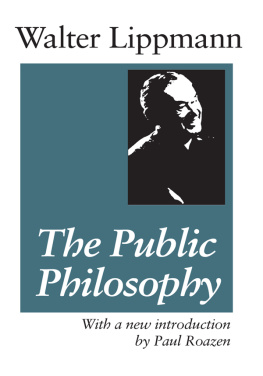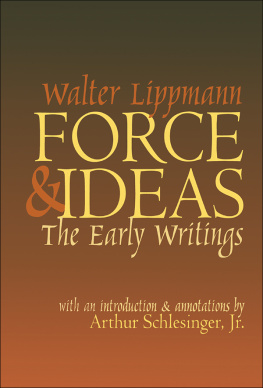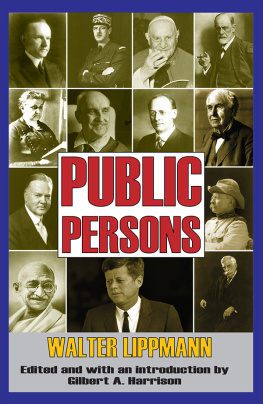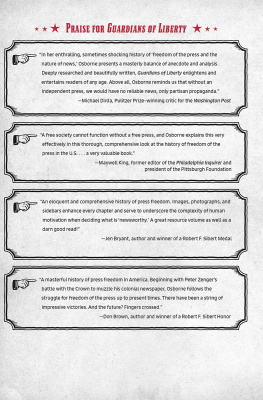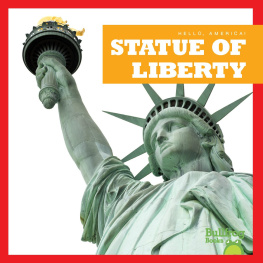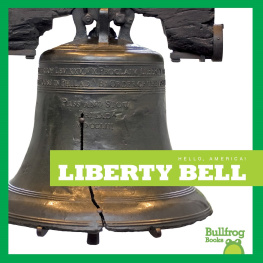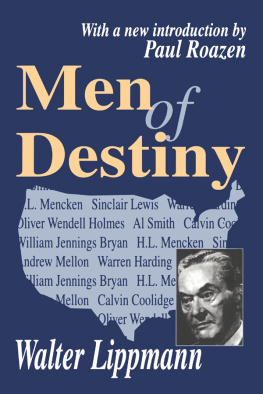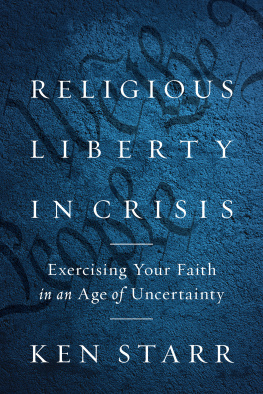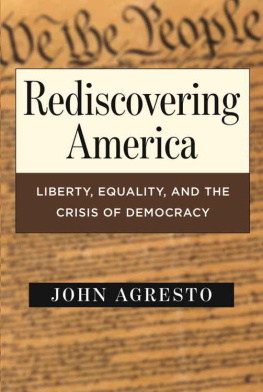1920
Liberty and the News
Walter Lippmann
a
mediastudies. press with a new
public domain introduction by
edition Sue Curry Jansen
Walter Lippmann
LIBERTY AND THE NEWS
a mediastudies. press public domain edition
Liberty and the News, originally published in 1920 by the harcourt , brace and howe , is in the public domain.
Published by mediastudies . press in the public domain series mediastudies. press | 414 W. Broad St., Bethlehem, PA 18018, USA
New materials are licensed under a Creative Commons Attribution-Noncommercial 4. 0 ( cc by - nc 4. 0) cover design : Mark McGillivray copy editing : Petra Dreiser
credit for scan : Internet Archive, from the collections of the University of Michigan, 2008 upload credit for latex template : Book design inspired by Edward Tufte, by The Tufte-LaTeX Developers isbn 978-1-951399-02-3 (print) | 978-1 -951399-03-0 (ebook)
library of congress control number 2020950484
Edition 1 published in November 2020
In writing this tract I have dared to believe that many things were possible because of the personal example offered to all who practice journalism by Mr. C. P. Scott, for over forty-five years editor-inchief of the Manchester Guardian. In the light of his career it cannot seem absurd or remote to think of freedom and truth in relation to the news.
Two of the essays in this volume, "What Modern Liberty Means" and "Liberty and the News" were published originally in the Atlantic Monthly. I wish to thank Mr. Ellery Sedgwick for the encouragment he gave me while writing them, and for permission to reprint them in this volume.
W. L.
New York City. January 1, 1920.
Contents
THE TWIN CRISES OF DEMOCRACY AND JOURNALISM vii
1 JOURNALISM AND THE HIGHER LAW 1
2 WHAT MODERN LIBERTY MEANS 7
3 LIBERTY AND THE NEWS 23
THE TWIN CRISES OF DEMOCRACY AND JOURNALISM
Introduction to the mediastudies. press edition
Sue Curry Jansen
1 Walter Lippmann, Public Opinion (New York: Harcourt, Brace and Co., 1922); and Lippmann, The Phantom Public (New York: Harcourt, Brace and Co., 1925).
Liberty and the News was published a century ago this year. A small bookconsisting of two essays previously published in the Atlantic Monthly, joined together by a short introductory chapterit seemed an unpretentious offering by Walter Lippmann (1889-1974). It was young Lippmann's fifth book, and, as a compilation, commentators have long considered it a minor work. Yet the questions it raised about journalism and democracy became the catalyst for a period of generative thinking by the author, leading to his classic, Public Opinion (1922), and its sequel, The Phantom Public (1925). The issues this little book identified would continue to influence Lippmann's thinking about the role of the media and the public throughout his long life. 1
Lippmann wrote Liberty in the immediate aftermath of his military service in France and his attendance at the peace negotiations in Versailles as an assistant to Colonel House, President Woodrow Wilson's chief advisor. Like so many members of the so-called Lost Generation, Lippmann felt deeply disillusioned by his wartime experiences. Liberty marked his initial attempt at coming to terms with the chasm that separated the idealism that had attracted him to a career as a journalist and public intellectual, and the systemic barriers that too often undermined the values fueling that idealism. Lippmann, who always chose his words carefully, referred to these obstacles as "censorships. "
Lippmann's use of the term censorship has not received adequate attention in the voluminous analyses and critical commentaries penned by generations of readers and interpreters. Yet censorship
was a pressing public issue when Lippmann wrote Liberty, as was its counterpart, propaganda. Both vividly shaped the author's immediate experiences during World War I.
2 Quoted in Ronald Steel, Walter Lippmann and the American Century (Boston: Little, Brown and Co., 1980), 125.
3 James R. Mock and Cedric Larson, Words That Won the War: The Story of the Committee on Public Information, 1917-1919 (Princeton, NJ: Princeton University Press, 1939).
Lippmann was one of the founding editors of the New Republic in 1914a magazine that published many of America's most influential intellectuals. Its editorial board had supported Wilson's re-election in 1916 and strongly favored U. S. entry into the war. In preparation for the mobilization of troops, Colonel House asked Lippmann to prepare a memorandum on wartime information policy. In response, Lippmann recommended that the Wilson administration set up an official news bureau that would provide the public with accurate information, and identify and discredit rumors and falsehoods. He also urged the administration to avoid arbitrary censorships. Lippmann recognized that some censorship was necessary during wartime to protect the troops, but contended that "protection of a healthy public opinion" was of "first importance. "2 Wilson was not persuaded. Instead, the president authorized the creation of the Committee on Public Information (CPI), which insiders at the time referred to colloquially as the "Ministry of Information. "3 The CPI was headed by George Creel, a former journalist whom Lippmann had heavily criticized for some of his coverage of the 1913-1914 Colorado coalfields labor conflicts that included what came to be known as the Ludlow Massacre.
The CPI developed into a propaganda behemoth with more than thirty divisions, including a censorship board; it exercised unprecedented influence over well-nigh every aspect of American life. Every available form of media was used to support the CPI's messaging, with the help of writers, journalists, artists, cartoonists, the film and advertising industries, clergy, school teachers, citizen volunteers, social clubs, and virtually everyone who had an audience, no matter how small. News was censored following "voluntary" rules that sanitized and glorified the war. Other U. S. government entities also imposed restrictions on free expression. Congress enacted alien and sedition acts. The postmaster assumed the role of censor by refusing to send through the mail socialist and other periodicals deemed offensive. Massive deportations of foreign-born war critics ensued; prominent war protesters, including the former presidential candidate Eugene Debs, were arrested and given long prison sentences; radical college professors were fired; and with mounting war hysteria, fanned by the CPI, discrimination against German Americans increased as well. Lippmann himself completed his military service in a propaganda unit in France, composing leaflets that urged German soldiers to surrender and interviewing German prisoners of
war.
By 1920, censorship amounted to more than an intellectual and professional concern for Lippmann; it had a visceral meaning for him, fueling his heated rhetoric. That year, he also published as a supplement to the New Republic a study of self-censorship by the press, co-authored with his longtime friend and colleague Charles Merz and titled "A Test of the News. "4 Pioneering content analysis as a method for assessing media bias, Lippmann and Merz analyzed coverage of the Russian Revolution in the New York Times. "A Test" was more than twice as long as Liberty; it examined more than 3, 000 Times articles covering Russia from March 1917 to March 1920. The overall conclusion? The Times, one of America's most trusted news sources, failed the test. According to Lippmann and Merz, the paper's news coverage of Russia was "dominated by the hopes of the men who composed the news organization. " The journalists saw what they wanted to see, not what was actually happening. Lippmann and Merz concluded that "the chief censor and chief propagandist were hope and fear in the minds of the reporters and editors. "5 Their desire to win the war and see the revolution defeated led them to systematically misrepresent the facts in Russia.
Next page

